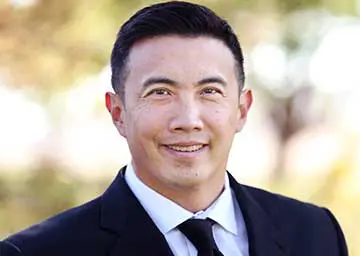Neck pain can range from minor pain to unbearable and can often be traced to degenerative conditions, genetic circumstances, or trauma. For patients seeking neck pain relief, a proper diagnosis is essential to finding the right treatment.
The cervical portion of the spine is comprised of the seven stacked vertebrae that begin at the base of the skull. Intervertebral discs cushion the vertebrae while the spinal cord and nerve roots throughout the spinal canal relay signals from the brain to support muscle function.
As we age, vertebrae discs can lose their height, bone spurs can develop, or the spinal canal can narrow. Vertebrae damage and degeneration can impede the nervous system and cause pain from the onset of arthritis or the reduced space for nerves and the spinal cord. The way that neck pain presents offers important information that helps your physician properly diagnose the root cause.
Symptoms of Cervical Neck Pain
Although some cervical pain patients cannot cite clear symptoms, most note the presence of pain, numbness, or muscle irregularity. Symptoms can be slow and progressive, including:
- Tingling or numbness in the arms, fingers, or hands
- Muscle weakness in the arms, shoulders, or hands
- Pain or stiffness in the neck
- Loss of grip strength or fine skill operations (e.g., handwriting, buttoning a shirt, using utensils).
- Imbalance, coordination problems.
- Lack of control of basic motor skills such as walking
Evaluating Cervical Pain
In many instances, cervical pain resolves with rest and conservative treatment. When pain persists, however, it’s important to get a proper evaluation. During an examination, a neck and spine orthopedic specialist can review your medical history and discuss the presence of symptoms and their progression.
Your doctor will also conduct a thorough examination of your neck, shoulders, arms, hands, and legs to assess numbness or weakness in the arms, hands, and fingers, muscle atrophy, or changes in reflexes and motor skills. The exam is supported by imagery that identifies the root cause of pain.
X-rays are used to assess bone alignment and disk damage, while computerized tomography (CT) scans identify bone spurs, and MRIs are employed to reveal damage to disks, spinal cord, or nerve roots. Electromyography (EMG) may also be used to gauge pressure on spinal nerve roots and other nerve damage. In some cases, contrast dye is injected into the spinal column to allow the spinal cord and nerve roots to show up more clearly.
For some cervical pain conditions, a full neurological assessment is needed because early symptoms are subtle and non-specific, and delayed diagnosis allows for deterioration and progression.
What is Cervical Radiculopathy?
Cervical radiculopathy is the result of a pinched, compressed, or irritated nerve in the neck. Cervical radiculopathy is generally a degenerative condition that progresses as the body ages, leading to arthritis. In younger patients, cervical radiculopathy is frequently traced to trauma/impact injuries that become herniated disks.
What is Cervical Myelopathy?
Cervical Myelopathy is a degenerative condition that narrows the spinal canal and impedes the spinal cord. It typically presents in patients over 50 with progressive neurological symptoms including numbness, poor coordination, unsteadiness, or loss of dexterity. Cervical myelopathy in patients under the age of 40 can typically be traced back to those born with narrower spinal canals. Due to the vague nature of these symptoms, proper diagnosis is often delayed and underreported.
What is Cervical Stenosis?
Cervical stenosis is the lack of adequate space in the spinal canal that compresses the spinal cord or nerve function. The narrowing of the canal is typically the result of a degenerative condition from aging or wear and tear. Discs lose water and shrink. Bone spurs develop. The result is less room for the spinal cord and nerve roots. Cervical stenosis can compress a nerve, the spinal cord, or both.
Cervical Pain Treatments: Do I need surgery?
Non-surgical Treatments
Many cervical radiculopathy and cervical stenosis cases resolve with rest or conservative, non-surgical treatments such as medications and physical therapy. Steroid injections can also be used to reduce local inflammation. The goal of these treatments is to reduce swelling and pain to support nerve recovery.
Surgical Treatments
When cervical pain is caused by compression from the narrowing of the spinal canal or bone spurs instead of inflammation, non-surgical treatments offer limited relief, and corrective surgical options may be required.
Surgical treatments for cervical pain are designed to relieve compression on the spinal cord or nerve, restore the original vertebrae height, and allow efficient spinal cord or nerve function. The location and cause of the pain will determine the necessary surgical procedure and its entry point. A surgeon can access the cervical spine from the front (anterior cervical decompression) or from the back (posterior cervical decompression). The goal of surgical treatment is to relieve neck pressure and pain while maintaining spine stability and preserving the neck’s range of motion. Pressure is relieved through the removal of bone or soft tissue to create more space for the nerve or spinal cord.
Anterior cervical decompression and fusion (ACDF) uses a 1-2 inch incision to remove any discs, bone spurs, or impediments causing pressure on the spinal cord. Stability is achieved by fusing one or more levels of the cervical spine.
In posterior cervical decompression, the cervical spine is accessed from the back. The lamina, a bony arch at the back of the vertebra, is thinned (laminoplasty) or removed (laminectomy) to relieve pressure. Fusion may or may not be required to restore stability, depending on the patient’s individual circumstances.
Artificial disk replacement (ADR) replaces the removed disk with artificial parts like those used on hip or knee placement. During the procedure, neck access mirrors the approach of the ACDF procedure via an incision on the front of the neck. However, ADR then replaces the removed disk with an artificial disk made of metal or a combination of metal and plastic. The artificial disk restores the height between vertebrae for the nerve roots while maintaining vertebrae motion and preserving some flexibility.
Surgical treatments for cervical stenosis target the source of pressure on the spinal cord to relieve pain and prevent further damage. In some instances, cervical stenosis can require the decompression of multiple levels to restore adequate space for the spinal cord.
Recovery
The type of surgical procedure as well as individual factors will determine if surgery is performed as an outpatient procedure or if an overnight hospital stay is required. Restrictions on diet and activity as well as recovery times also vary by procedure. Generally, patients should expect activity restrictions in the days that follow surgery and gradually progress on a schedule that supports a return to low-impact work and activities in the days and weeks that follow.
A recovery regimen that includes stretching and physical therapy guides recovery during the weeks following surgery, and many patients experience a return to standard activities in four to six weeks. Surgeries requiring spinal fusion can require six to twelve months for the fusion to fully solidify. During that time, strict activity limits are often in place.
Treatments for cervical pain offer meaningful relief and favorable outcomes for most patients. In addition to pain relief, it’s common that patients successfully resume their desired daily activities following successful recovery.
The neck and spine specialists at Advanced Orthopedics and Sports Medicine Specialists are trained to diagnose and treat neck pain conditions to get you back to your daily routine. To learn more about cervical pain treatment options, schedule an appointment.









